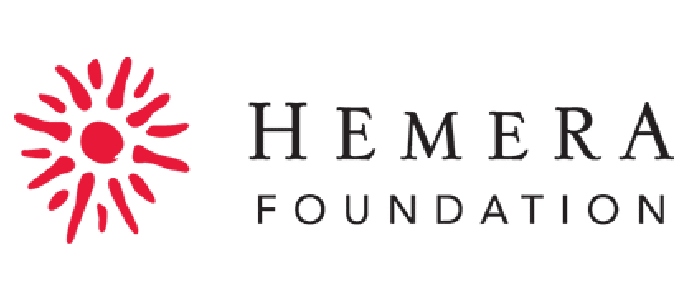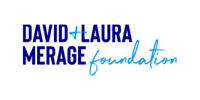THREE ACTS
A Survey of Shame, Emotion, and Oblivion
Curated by Mark Sink
In collaboration with Todd Edward Herman, Denver Collage Club, Alto Gallery and the Unperson Project, Three Acts braids three unique collaborations into one exhibit at RedLine Contemporary Art Center for the Month of Photography exhibition.
André Ramos-Woodard and Todd Edward Herman offer a personal and collective experience of socially-constructed identity and the personal and/or public harm that can follow. Founder of East Window exhibit space in Boulder, Todd Edward Herman’s“Shame Radiant” explores 200 photographic responses to the experience of shame, in order to disentangle it with guilt. This tapestry of suffering seeks to return images to a more reflective, healing and contemplative space as opposed to a relic of judgement or a painful memory.
Denver Collage Club and Alto Gallery join forces for the second act that dives into the phenomenon of Cancel Culture and the existential crisis spurred by the pandemic. Alongside Pardon My Creep, where artists Kellye Eisworth and Britland Tracy unpack the role and impact of digital mediation on human connection and the dismantling of relationships as a result.
The final act features the Unperson Project, an archive of oblivion from the artist duo from Mexico City, Andrea Tejeda and Susana Moyaho. Together, Three Acts carry the sentiment, crisis and response to the times.
“I want to thank the talented artists who stepped up to our call for work in one of the most difficult times we have ever experienced. To RedLine, Louise Martorano, Whit Sibley, Heidi Morgan, and the amazing RedLine staff who put up with my painful messy ways. And special thanks to Reed Photo Art and Imaging and Infinite Editions for their amazing printing work.” - Mark Sink
Additionally, we would like to express our gratitude to RedLine's leading Annual Fund contributors: The David & Laura Merage Foundation, Bonfils-Stanton Foundation, Hemera Foundation and the citizens of the Scientific & Cultural Facilities District (SCFD).
Curator Mark Sink has created a virtual showcase for THREE ACTS: A Survey of Shame, Emotion and Oblivion that features a video walk-through of the exhibition, related press, high resolution images, participating artist links, as well as details about specific works and art projects.
André Ramos-Woodard
Born in Nashville, Tennessee, André Ramos-Woodard is a contemporary artist whose works evoke feelings of dreams and surrealistic narrative. Primarily working with photography and collage, he conveys ideas of communal and personal identity through internal conflicts. Ramos-Woodard is influenced by personal experiences he went through while discovering his own identity – he is queer and African-American, both of which are well-known targets for discrimination. He uses his art to accent the ideas of separation between him and the viewer, specifically those that may not resonate with the ideas of the “Other” or problems within minority groups in contemporary culture. Ramos-Woodard received his BFA from Lamar University in Beaumont, Texas, and is currently pursuing his MFA at The University of New Mexico in Albuquerque, New Mexico.






Thought Objects: Being, Essence and Notion
The Denver Collage Club, founded in 2013 by Mark Sink and Mario Zoots.
A mission to share and learn about current and historical work and forward thinking ideas on the topic of collage, today.





















An Oblivion
By The Unperson Project - Andrea Tejeda and Susana Moyaho
Mexico City
This project is an archive of oblivion. We created an open call inviting people to donate photographs where they have erased someone from the image as a means to forget them or a moment in their history. This process is called vaporization and once someone is vaporized they become an Unperson, a term created by George Orwell in 1984. We focus on exploring the value of the photograph as a medium in which inflicted attempts of oblivion are perpetrated and how those blank spaces, burnt marks, cut out faces or scratched off ink taking the place of someone only insist on the presence of the ones who went from apotheosis to damnatio memoriae.





Pardon My Creep
By Kellye Eisworth and Britland Tracy
Pardon My Creep is an investigation of intimacy, desire, and the performance of the self in the digital age. Weaving together found photographs of couples alongside messages they have received from men via online dating apps, artists Kellye Eisworth and Britland Tracy explore contemporary notions of relationships, both real and imagined. Each unanswered message offers a glimpse into the effect of digital mediation on human connection. The emotions conveyed i n their words range from sad, thoughtful, bored, aggressive, and desperate. Some messages feel cold and impersonal, like automated form letters; others are inundated with aggressive, masculine bravado. Some men seem to genuinely want to connect. Placed together in conversation, their words become a surrogate for the connection the other is seeking. The photographs were purchased online or in flea markets. Forsaken or forgotten by their subjects, they no longer function as personal mementos.



Shame Radiant
By Todd Edward Herman
My facilitating a survey-exhibit about our experiences with shame began by attempting to disentangle it from its sister-emotions guilt and disgust, and then asking how, when shame is activated, can it signal both a regulating and challenging of social norms and transgressions. Moreover, my personal interest i n this project is in examining how this powerful moral emotion can turn inward, to ourselves, to our bodies, often catalyzing self-harm, self-negation, self-reflection, self-evaluation as well as healing. A forum for such queries is particularly relevant at a time when our respective relationships to a climate of amplified national and global conservatism, xenophobia, racism, transphobia, homophobia, and ableism have been significantly challenged.
I invited photographers, writers, visual artists, and non-artists from around the world to make work that collectively addressed their experiences with shame. The nearly 300 photographs, collages, drawings, and texts that were submitted in response look at deeply intimate, broadly political, emotional, physical, social, sexual, interpersonal, intergenerational, and institutional aspects of shame.
Shame Radiant hopes to offer an opportunity for participants as well as viewers to explore more of the personhood and less of the pathology of our collective as well as our outlying experiences of shame. Everyone who submitted work to Shame Radiant is represented in this exhibition.









Installation images courtesy of Wes Magyar, WM Artist Services





